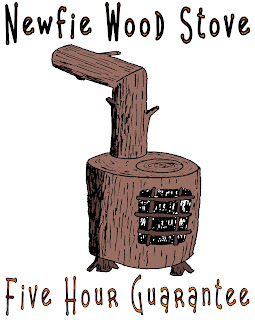- Sep 16, 2013
- 1
Hi All,
I'm a newbie to wood stove heat. Sure, I grew up here in Newfoundland, Canada, so I'm no stranger to them.
I guess it's best if I give you an idea of what I'm working with: Ok, so my wife and I have recently bought a house. It's an older home that has been rebuilt and well-insulated. It's a two-storey with an attached double garage (directly beneath two of our upstairs bedrooms). The house is about 4,400 square feet including the garage (it's 2,200 square feet on each floor). That said, I also have a full-basement.
The house has electric heat (10 baseboards - total). This doesn't seem like a lot - I don't know if this is a testament to the good insulation, or if the house will be cold in winter. We only moved in a month ago, so I'm unsure of what it will cost to heat using electricity or if the ten baseboards will even get it warm here.
Given where I live, access to cheap/free dried wood (birch and witch hazel, predominantly) is not an issue. With that in mind, I've decided that I'm going to put a wood stove but I'm a little overwhelmed and looking for advice:
A few questions:
- If I put my stove in the basement, I know that the heat rises and will keep the first floor of my home warm. However, should I expect much, if any of this heat to rise to the second floor of the house?
- Is it better to put the stove in my garage (first-floor, beneath second floor bedrooms)? Is it likely that the heat will distribute through the walls garage and keep the rest of the first floor warm?
- I have 2,200 square feet per floor. I'm looking at the following stoves with the prices in my area:
DROLET HT2000 : $1,500
PE SUMMIT: $3,000
Napoleon 1900: at least $2,500
I always believe that you get what you pay for but I'd rather hear your comments as some of you may have advice to share.
Thanks all,
Jon
I'm a newbie to wood stove heat. Sure, I grew up here in Newfoundland, Canada, so I'm no stranger to them.
I guess it's best if I give you an idea of what I'm working with: Ok, so my wife and I have recently bought a house. It's an older home that has been rebuilt and well-insulated. It's a two-storey with an attached double garage (directly beneath two of our upstairs bedrooms). The house is about 4,400 square feet including the garage (it's 2,200 square feet on each floor). That said, I also have a full-basement.
The house has electric heat (10 baseboards - total). This doesn't seem like a lot - I don't know if this is a testament to the good insulation, or if the house will be cold in winter. We only moved in a month ago, so I'm unsure of what it will cost to heat using electricity or if the ten baseboards will even get it warm here.
Given where I live, access to cheap/free dried wood (birch and witch hazel, predominantly) is not an issue. With that in mind, I've decided that I'm going to put a wood stove but I'm a little overwhelmed and looking for advice:
A few questions:
- If I put my stove in the basement, I know that the heat rises and will keep the first floor of my home warm. However, should I expect much, if any of this heat to rise to the second floor of the house?
- Is it better to put the stove in my garage (first-floor, beneath second floor bedrooms)? Is it likely that the heat will distribute through the walls garage and keep the rest of the first floor warm?
- I have 2,200 square feet per floor. I'm looking at the following stoves with the prices in my area:
DROLET HT2000 : $1,500
PE SUMMIT: $3,000
Napoleon 1900: at least $2,500
I always believe that you get what you pay for but I'd rather hear your comments as some of you may have advice to share.
Thanks all,
Jon



